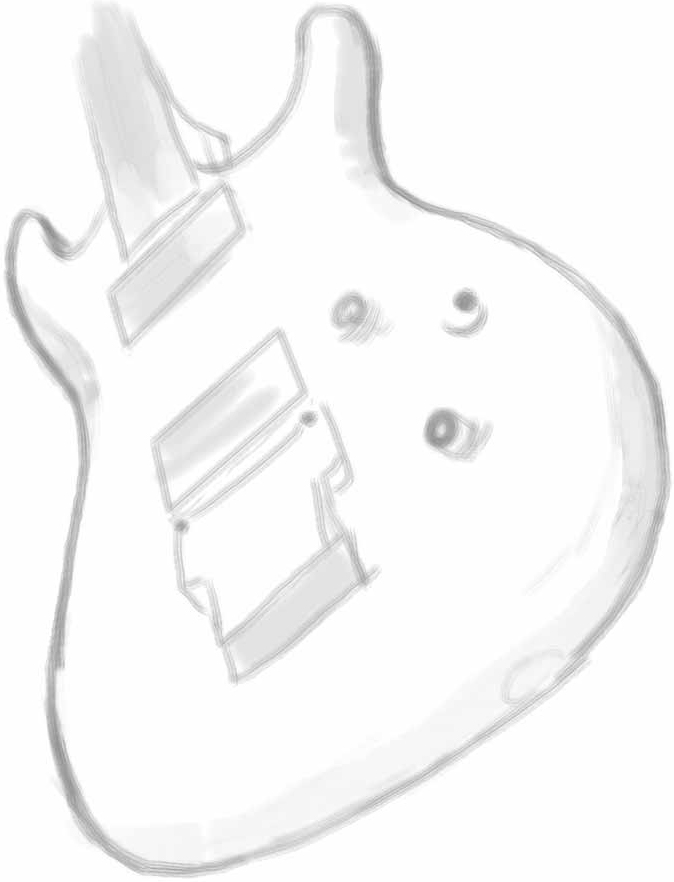I bought the SR1.6AMP because I decided needed a six-string guitar with an Evertune bridge to make it easier to record clearer, more in-tune rhythm parts which would sit nicely in a mix with the synthesised instruments I use for orchestration. In particular, I wanted to try out the Fishman Fluence Modern pickups, since I’d heard that they were both very noiseless and also quite versatile. I figured that I’d try to put together a quick demo song, using as many different pickup settings as possible, as part of the process of figuring out how I can incorporate this guitar into my recording process.
The distorted rhythm guitars were recorded using Otto Audio‘s II II II II, and the lead guitars and clean rhythm are Neural DSP’s Plini plugin. The harmony guitars use Logic’s built-in guitar presets. The drums are Toontrack’s EZ Drummer with the Drumkit From Hell sound bank, and the bass is my Ibanez SRX700 recorded using Neural DSP Parallax.
The rhythm tracks and most of the leads were recorded using the bridge pickup, while the lead melody in the quiet section uses the neck pickup. Out of the box this guitar is wired with the option of selecting two different pickup voicings via a push-pull on the tone knob. The default voicing is an “active” sound, which is a bit like a more subdued EMG, while the alternative voicing is supposed to sound more “passive”. Both settings are very definitely humbucker-sounding; it’s possible to EQ them into a passable approximation of a single coil but you’re not going to get a classic Strat twang out of them. However, they are a good base for signal processing; the combination of Fishmans, a set-through neck and the Evertune provide very nice balance across the strings and a very low noise floor.
I’ve now had a chance to play the SR1.6AMP some more, with the proviso that the poor thing is still reeling a bit from being transported halfway round the world and the wood hasn’t really settled yet. It originally arrived with a low action and the neck setup very straight indeed, to the extent that there may even have been a little bit of back-bow. As a result, there was some ringing at the 7th fret on the high E string and twelfth fret on the B string. I was slightly surprised since my A1.8 never needed any truss rod adjustment at all, but on the other hand that guitar has a 27 inch scale length, two truss rods and a neck that, although very comfortable, is absolutely humongous, so it probably handles changes in climate better.
In any case, slacking the truss rod by a quarter turn and leaving the SR1.6 overnight seems to have fixed it. After tweaking, the action is very comparable to other superstrat guitars and there’s actually surprisingly little choking on string bends. The neck is a C-shape which is supposedly a bit thicker than some competitors but it’s barely noticeable. The frets are stainless steel and seem to be competently installed; I can’t really tell any difference in feel from standard nickel but they’re very shiny if you’re the kind of person who cares about that sort of thing.
So in summary, would I buy this particular guitar again? I think the answer is maybe. I would certainly buy another guitar from Solar; my A1.8 is a really great instrument and this one is very good. The hardware specs are excellent and I think that as a whole its good value for money. The pickups aren’t particularly inspiring but they have a nice clarity and focus on the midrange which makes this guitar very easy to record with. So, in conclusion; if you want a “studio” guitar for recording rock and metal then a Fishman-equipped Solar is a good option; if you want an instrument for live playing or solo practice, then the Seymour Duncan equipped models are perhaps a little less polite and a little more exciting.

Leave a Reply